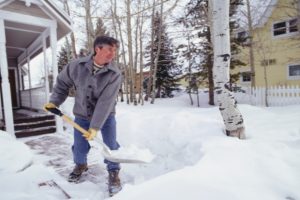 It seems like 2016 will be the return of the polar vortex – extreme cold and high winds. As a result experts are warning Americans to prevent hypothermia and frostbite as best as they can. Wind chills can make temperatures feel as cold as 30 or 40 below zero which means frostbite can occur in as little as 10 minutes if skin is left exposed.
It seems like 2016 will be the return of the polar vortex – extreme cold and high winds. As a result experts are warning Americans to prevent hypothermia and frostbite as best as they can. Wind chills can make temperatures feel as cold as 30 or 40 below zero which means frostbite can occur in as little as 10 minutes if skin is left exposed.
Hypothermia is another threat brought on by extreme cold temperatures. Annually, nearly 1,000 deaths result from hypothermia. Those at highest risk for hypothermia include seniors and those who work outdoors.
Advertisement
Emergency physician at Lennox Hill Hospital, Dr. Robert Glatter, explained, “It is important to take measures to stay warm, paying special attention to the head and scalp [as well as the nose, neck, and ears], which are often exposed to the cold air, and thus at risk for heat loss in cold temperatures.”
Wearing layers and preventing heat loss are viable tips to help prevent hypothermia.
Hypothermia can occur as quickly as 15-20 minutes of exposure to extremely cold temperatures. Being wet or not wearing enough layers can increase your risk.
Other dangers brought upon during the winter season include heart attack. A polar vortex is usually accompanied with plenty of snow and shoveling all that snow can increase a person’s risk of heart attack, especially if a person already has risk factors.
Dr. Glatter explained, “It is quite important to take frequent breaks while shoveling, but also to keep yourself well hydrated both before and after shoveling. If you develop chest pain, difficulty breathing, dizziness, or arm or back pain while shoveling, stop and call 911. I recommend using a smaller snow shovel or consider using a snow blower if you have to remove snow. Lifting heavy snow can potentially raise your blood pressure sharply as you lift. It’s safer to lift smaller amounts more frequently — or if you can’t lift it, just push the snow.”
Advertisement
Furthermore, injuries can be a result of improper shoveling or slipping and falling on ice.
Dr. Glatter suggested, “People should wear sturdy, insulated boots and walk slowly, looking carefully at both feet and the pavement in front of them to avoid any potential patches of ice mixed in with the snow.”
Lastly, avoid alcohol or caffeine after shoveling snow as it can contribute to dehydration. Instead drink plenty of water before or after shoveling.
